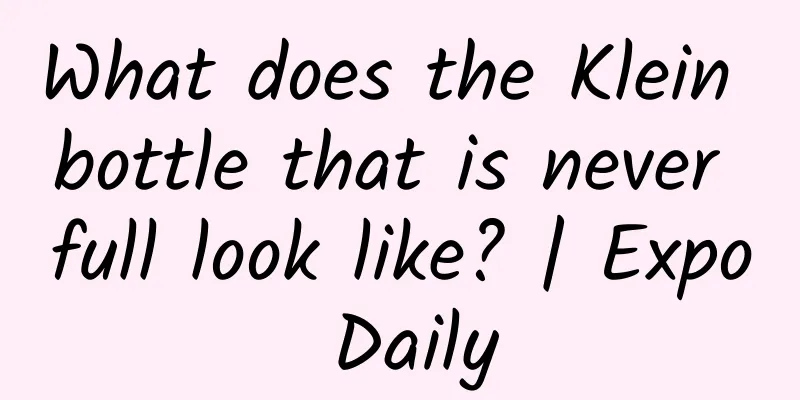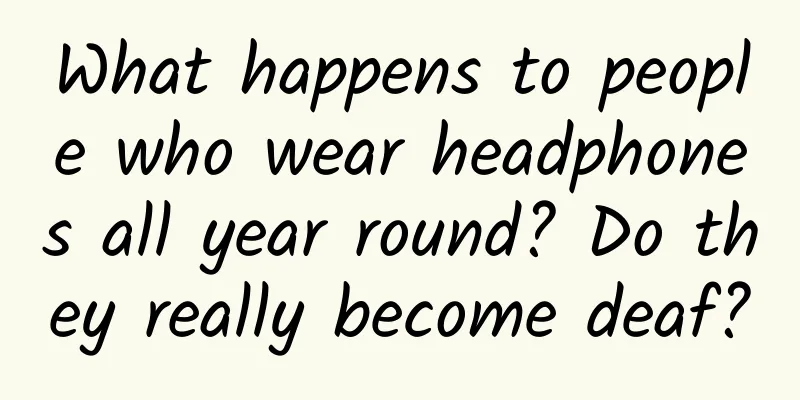What does the Klein bottle that is never full look like? | Expo Daily

|
What does a Klein bottle that is never full look like? The Klein bottle is a mathematical structure and a geometric body with special significance in topology. The structure of this bottle can be described as: there is a hole at the bottom of the bottle, the neck of the bottle is extended and twisted into the inside of the bottle, and then connected to the hole at the bottom . The design of the Klein bottle was originally proposed by mathematician Felix Klein, but he originally proposed the "Klein plane", which was later mistakenly called the Klein bottle. In topology, we call the Klein bottle a "compact non-oriented surface." This means that it can be considered a closed surface and has no concept of direction. This object has no inside and outside, no "edges," and its surface never ends. If you cut the Klein bottle along its symmetry line, you get two Möbius strips! Open the shopping app and search for "Klein bottle", we can see the materialized Klein bottle, but this is not its "real body". The Klein bottle embodies the leap from three dimensions to four dimensions, which is something that humans as three-dimensional creatures cannot create. If you try to pour water into a Klein bottle, the water will flow along the surface, and since the surface of the Klein bottle is continuous, the water will keep flowing until it fills the entire surface. However, due to the non-directional nature of the Klein bottle, we cannot determine which part is up and which part is down, so the water will keep flowing and will never be full. This feature demonstrates an important concept in topology: certain properties of a shape remain unchanged under continuous deformation. Image source: veer gallery There is a simple way to improve your vision that you can do every day Blinking does more than just lubricate the eyeball, we blink far more often than that. We spend about 10% of our waking time blinking with our eyes closed, and although neural activity decreases when the eyes are closed, it rebounds to higher levels the next time we blink, which is thought to enhance vision. In the new study, neuroscientists at the University of Rochester had 12 subjects look at images of varying contrast on a screen and used high-resolution eye tracking to study the effects of blinking on vision. The researchers found that blinking can enhance visual input signals by adjusting the intensity of light falling on the retina compared to when the subjects stared at the screen. The researchers observed this phenomenon when the researchers instructed the subjects to blink or when the subjects blinked spontaneously. Unlike previous studies that found that only real blinking can improve attention, this new study found that lighting changes that simulate blinking can also temporarily improve vision. "Blinking does not impair visual processing as commonly believed, but rather improves visual sensitivity," the researchers said. Additionally, the researchers found that blinking helps reformat visual information in a similar way to other involuntary eye movements, such as ultra-rapid saccades and eye drifts, which shape vision by adding spatial and temporal markers to it. Being a Cyberhamster at an Electronic Horse Farm Just because you have collected something doesn’t mean you have mastered it! Digital hamsters refer to people who are keen on hoarding digital information. In today's Internet age, almost everyone has collected some online resources that they can't bear to miss, in case of emergency or to read later, but they are often forgotten. The reason why we easily forget the articles or videos we have collected is actually due to a famous memory effect in psychology: the Zeigarnik effect. It means that people have a deeper impression of unfinished things than completed things. In other words, we are more likely to forget things that we think we have completed. When we see an excellent article or a practical teaching video, "reading the article" or "putting it into practice" is an unfinished event for us. But when we think of the method of collecting, a subtle psychological change will occur, and the unfinished event will then become "collecting the article/video", so collecting will complete the end for you, giving our brain an illusion that "the event has been completed". At this point, the Zeigarnik effect kicks in, causing the brain to start executing the forgetting process: "Since these things have already ended up in collections, why should I remember them? I might as well just forget them. I still have other things to deal with!" Selectively collect resources that are truly helpful to you, regularly declutter your favorites, make a study plan and actually take action...this is the best way to keep your favorites from gathering dust! Is the end of the earth destined to be "wandering"? When the Sun dies, the Solar System and everything in it — including Earth — will be unrecognizable. But whether the planet we call home is "swallowed" by the dying star or manages to escape its grasp, only time will tell. A recent paper published in the Monthly Notices of the Royal Astronomical Society pointed out that Mercury and Venus will almost certainly be crushed and swallowed by the sun; some of Jupiter's satellites may be moved and shattered. As for the Earth - it may survive, but unfortunately, even if the Earth outlives the sun, it will not be habitable: at that time, the Earth will lose its atmosphere and oceans and will no longer be a habitable place. If the Earth, Venus and Mercury are swallowed by the Sun together, then only Mars and four gas giant planets (Jupiter, Saturn, Uranus and Neptune) will be left orbiting the star that has become a white dwarf. Right now, the Sun is constantly burning hydrogen in its core. Once it runs out, it will expand into a red giant and eventually become a white dwarf, the final state of a star after it has burned through all of its fuel. So the researchers wanted to know what would happen to asteroids, satellites, and planets that passed close to a white dwarf. The study found that the fate of these objects is likely to be extremely violent and catastrophic: being torn apart by the huge gravity of the white dwarf and then broken into smaller and smaller fragments. However, the Earth is likely to be swallowed by the expanding Sun before encountering the white dwarf. Hot rice wine, cold beer Our preference is quite scientific. People tend to prefer different drinking temperatures for different types of alcohol, such as iced beer or white wine, red wine close to room temperature, or warm rice wine. Recently, a study published in Matter pointed out that the "flavor" of drinks may change at different temperatures. The researchers measured the change in the contact angle of the solution as the alcohol concentration increased (the contact angle is a common method to measure the surface tension of a liquid, which can reflect the interaction between molecules inside the droplet). The results showed that the contact angle did not increase linearly with the alcohol concentration, but showed a series of irregular plateaus at different concentrations. At low ethanol concentrations, ethanol formed more tetrahedral structures around water molecules, but when the concentration increased, ethanol began to connect end to end like a chain. Interestingly, the researchers also found that when the ethanol solution was cooled or heated, the disappearance or appearance of the stable period could be observed, and some of these trends could explain the differences in the perception of the taste of alcohol. For example, 38% to 42% and 52% to 53% ethanol solutions (corresponding to the ethanol concentration of liquor) have different cluster structures at room temperature, but at higher temperatures, both concentrations have more chain structures and therefore taste more like "ethanol". In 5% and 11% ethanol solutions (corresponding to the ethanol concentration of beer), the chain structure is significantly enhanced and the tetrahedral structure is significantly reduced at 5 degrees Celsius, which may produce a stronger "ethanol-like" taste, making us prefer ice beer. The content is compiled from China Science Popularization Expo Weibo, Global Science, China National Astronomy, and Mechanics Popularization This article was first published on China Science Expo (kepubolan). Please indicate the source of the public account for reprinting |
<<: Is food inedible after it sprouts? This is not necessarily true!
Recommend
NetEase Youdao Premium Courses’ full growth system for user operations!
Youdao Premium Courses is an online education pro...
For safety reasons, the EU requires electric vehicles to add "artificial noise"
Different from the internal combustion engines of...
Xiaopeng Motors G3 will be launched this spring, and the OEM is finally not JAC
Nowadays, the decline of subsidies for new energy...
Is the 8K TV that has dominated technology exhibitions an inevitable trend or have manufacturers run out of tricks to sell their products?
Different from the focus of most young consumers ...
The pitfalls I encountered in community operation: It turns out that meeting the high-frequency needs of users is the root of activity!
Community operation has been a hot topic and is b...
Epidemic + college entrance examination, how should we eat three meals a day?
Beijing will host the college entrance examinatio...
Can a computer write perfect pop music?
The Atlantic Monthly recently published an articl...
CINNO: China's consumer VR product sales increased by 1% year-on-year in the second quarter of 2023
In Q2'23, the sales volume of domestic consum...
Today is the beginning of the dog days丨Why are the dog days so hot?
Today marks the beginning of the dog days of summ...
4 tips and 6 taboos for live streaming sales
As a short video platform with more than 600 mill...
19-year-old boy suffers from Alzheimer's disease, test yourself now!
Recently, a paper by Capital Medical University P...
How much does it cost to join Xining Bargaining Mini Program? What is the price to join Xining Bargaining Mini Program?
How much does it cost to join a price-bargaining ...
iPhone 6 fingerprint recognition has a loophole: fake fingerprints can unlock the phone
Security Research Labs from Berlin, Germany recen...
Why is the Honor 9X series so priced so brutally?
On July 23, Honor released the new Honor 9X serie...
When is the best time for migrant workers to return home? Do I need to be quarantined after returning?
As time goes by, it is already the Lantern Festiv...









